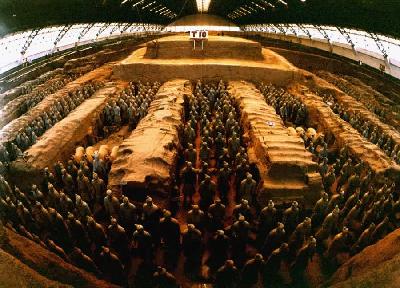| Art Q&A > Painting |
|
|
Eighth Wonder of the World: Terracotta Warriors
As a whole, the Terracotta Warriors create a magnificent and dignified atmosphere. The statues of generals are tall and strong, wearing armor. But the manner of the kneeling soldiers is the most complex. Judging from their face shapes, hairstyles and figures, one can guess the soldiers' characters and regions of birth. With their ears perked up, some of the clay horses were depicted as neighing, while others are silent. Every piece of the sculptures is charming. Many people believed that Chinese ancient sculpture came into being in the Northern and Southern Dynasties (420-581) with the introduction of Buddhism from India. The Terracotta Warriors proved otherwise. The discovery demonstrates the high level of Chinese sculpting skills during the Qin Dynasty, becoming the link between the past and future of Chinese sculpture history.
Also, the Terracotta Warriors provides abundant tangible materials for research on military affairs, culture and economy of the Qin Dynasty. |
||||||
All rights reserved. Reproduction of text for non-commercial purposes is permitted provided that both the source and author are acknowledged and a notifying email is sent to us. |
||||||
 |

